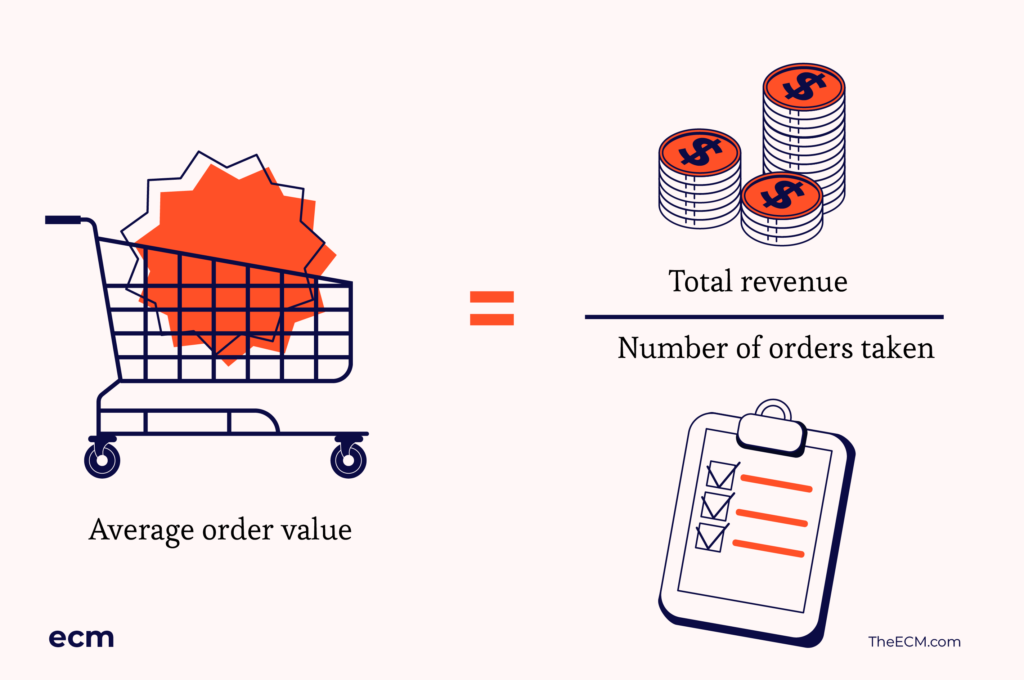Over three-quarters of online shoppers say they are more likely to buy something—and more likely to spend more money on an item—if it includes free shipping. Three-quarters of shoppers also signed up for Amazon Prime simply to have access to fast, free shipping options.
Yet even given all the evidence, many independent ecommerce stores still don’t offer free shipping as an option. It is easy to see why offering free shipping is not used by all brands, it has a reputation for being expensive, and ecommerce margins are already tight.
However, it might not be as expensive as you think, and in the long run, getting more customers is always going to be a win.
In this guide, I’ll go through how you can offer free shipping to your customers, the best practices, and some strategies to use free shipping to make more sales.
What Is Free Shipping?
Free shipping gives the customer the option to have their products delivered to their front door free of charge.
Some online stores offer free shipping as standard, whereas some businesses offer free shipping when an order is above a certain amount. Some businesses also offer free return shipping, allowing the customer to send a product back free of charge.
What Are The Benefits Of Free Shipping?
Obviously, the main benefit of free shipping is that you will be making your customers happy. Happy customers make for a happy business, and customers love getting free stuff.
However, from a business financial point of view, there are some other benefits that you might see when you offer free shipping.
Improved search visibility
If you sell your products through a marketplace, such as Amazon, then you might find that your products appear higher in the search ranking if you offer free shipping.
Many customers, myself included, filter their shopping results to see products with free or fast shipping. If you don’t offer free shipping, then your products won’t appear in those searches.

Increased conversion rates
Over 80% of customers expect shipping to be free above a certain dollar amount, and in the U.S., 90% of customers would be disappointed if shipping was longer than 2-3 days.
If you're not fulfilling a customer's needs, then it is less likely that a customer will make a purchase. Shipping isn’t the only factor that customers look at, and if you have bad images, poorly written product pages/listings, or simply bad products, then free shipping isn’t going to be a miracle cure.
But assuming your products aren’t rubbish, then free shipping could be the final factor that makes a customer choose your brand rather than the competitors.
Higher average order value (AOV)
Many brands offer free shipping over a certain order amount. For example, Amazon offers free shipping in the U.S. for orders over $25, and Asos offers free shipping for orders over £40.

The reason brands do this is to increase the basket size of an order. If your customer can increase their basket size, then it can make you more profit, even if you take into consideration the cost of giving the customer free shipping.
There are a few tactics for offering free shipping over a certain amount, which we will discuss later in the article.
Improved brand reputation
As we discussed, customers love getting free things. By improving customer satisfaction, you are more likely to get good reviews and improve your overall reputation. Getting good reviews can be huge for your brand—once your products get over 50 reviews, your conversion rate, on average, will improve by 4.6%. This is a huge incentive to offer free shipping.
Improved customer loyalty
Happy customers are much more likely to be loyal customers, and offering free shipping is a great way to do this. Remember, the reason why so many people signed up for Amazon Prime is for the free shipping options, which allow customers to order products and return them for free. Amazon’s customers are very loyal, and once a customer is with Amazon Prime, they are much more likely to do all their shopping with Amazon.
Gain a competitive advantage
Some online retailers still don’t offer free shipping as an option, even when orders are above a certain minimum threshold. You can get an advantage over these brands.
What Factors Do I Need To Consider Before Offering Free Shipping?
There are many details you need to consider before giving your customers free shipping. For most businesses, money is going to be the biggest factor, so let’s have a look at some things you need to think about before going all in on free shipping.
What is your profit margin?
The first thing you need to do before going headfirst into free shipping is to work out if your profit margins allow you to offer free shipping. The last thing you want to do is start losing money. Revisit your COGs (cost of goods) to see if they have changed, and work out your warehousing and freight costs plus any marketing spend, to make sure your product prices and profit margin are still strong.
Understand the costs of free shipping
Speak to your current shipping provider to see if they offer any free shipping services or any reductions in shipping fees for different shipping speeds. The reason for this is that you might consider making three-day delivery free of charge, but charge extra for next day or two-day delivery.
Shop around to see if any other delivery providers can give more competitive rates.
Work out what your free shipping threshold will be
Once you have worked out the profit margin and how much the shipping will cost, you can work out what your average order value (AOV) will need to be in order to qualify for free shipping.
For example, if your AOV is currently $50 and your net profit margin is 20%, then you will be making a $10 profit on each order. If the shipping cost is below $10, then you are still in the green.
Will you offer free shipping for all products?
It is going to be expensive to offer free shipping for very bulky products, so you may want to consider either having paid for shipping or a higher threshold for large items. Customers know that shipping costs money, and if you are selling extremely large products such as refrigerators or televisions, the customer won’t necessarily expect the shipping to be completely free.
Where are your customers based?
Free shipping can work well in smaller countries, but if you are shipping across a large area such as the U.S., then the shipping costs can vary for different ZIP codes. Make sure you check these costs with your shipper before offering all ZIP codes for free. Some shipping partners use shipping zones to group geographies together.
6 Free Shipping Strategy Examples
There are six main strategies that businesses use for offering free delivery to customers, and I have examples of how each strategy could work for your business.
1. Free shipping on every order
The easiest strategy is to just offer free shipping to all customers. The benefit of this is your customers will be able to order whatever they like, so your conversion rate will be high. The downside to this is it could be costly. This is a good option if you sell products at a high-profit margin.
An example of this is the brand Zappos, which offers free shipping on all products, no matter the order size.
2. Free shipping to members
This is the strategy Amazon uses with Prime shipping. Offering free shipping to members is a great way to get a customer’s contact details, which will be great for marketing and cross-selling.
However, this could be quite a technically difficult option to offer, as you need to track customers and their membership status before an order can be placed. Many brands use it as a perk of membership to encourage customers to sign up.
3. Free shipping above a threshold
Offering free shipping above a minimum order value is an excellent way of increasing the basket size while offering your customers the benefit of free shipping. One strategy that works well with this is offering “add-ons” in the shopping cart before checkout.
For example, as a clothing brand, if your threshold is $40 for free shipping, but the customer’s basket size is $35, you could encourage them to buy a pair of socks for $8 during the checkout process. This would get you an extra sale, which is another chance for a customer review, and could also make you more profitable.
4. Free shipping for specific products
Sometimes it makes sense to offer free shipping for select items and different delivery options for others. This is a good strategy for some larger or more expensive items and could even be a good opportunity for an upsell.
For example, you could give a free shipping offer for 3-5 days but paid for next-day shipping or flat-rate shipping charges for premium orders. Alternatively, you could have free shipping but a charge for an installation fee.
It might also be a good idea to offer free shipping for your best-selling items or as an extra incentive during a promotional period. Sometimes a free shipping promotion for a limited time can encourage customers to make a purchase quicker if they know that the free shipping period is going to end. It can be an excellent marketing tool to encourage quick purchases.
An example of this is the beauty brand Sephora, which offers free shipping on selected products and also to members of their loyalty program, the Beauty Insider club.
5. Free shipping and free returns
Many businesses now offer free returns as part of their shipping process. This can be expensive, but if you are planning on selling products at a quick rate, it is a great way to increase your conversion rate. Asos started to offer free returns with their shipping and saw their conversion rate increase massively.
Of course, this works great for a brand such as Asos, as they sell a huge amount of products. But it is a trend I see more often as small businesses try to compete with huge brands.
6. Free item collection
Free item collection was once only available to larger brands with bricks and mortar stores, such as Argos in the UK. However, the option is now becoming more available for smaller brands. The vintage clothing brand Modcloth offers collections from partner stores, and you can even use some of the bigger shippers, such as FedEx and UPS, to deliver to drop-off points.
How To Offer Free Shipping Without Hurting Your Bottom Line
Offering free shipping has lots of advantages, but it isn’t free. There are a few tactics you can use to make sure your profit margin isn’t harmed.
Increase prices
Increasing your prices can be a risky strategy, as ecommerce businesses can be quite competitive. However, customers prefer free shipping even if the overall price ends up being higher. This is a psychological trait called the decoy effect. If you have a great brand, website, and product pages, many customers might not see the price difference and will instead see free shipping as an option.
However, this doesn’t mean you can just have high prices and get away with it. You need to keep your prices competitive, so make sure you work out your average shipping costs and increase your prices roughly in line with the cost of shipping. FedEx recommends increasing your price by 15% above the AOV.
Use 3PLs
As we discussed, shipping can cost more depending on where in the world the items are being delivered to. One way to get around this is to use Third Party Logistics warehouses, also known as 3PL. By distributing your products across a larger area, your products will be closer to the customers and possibly cheaper to deliver. Even if you can’t get cheaper shipping, 3PLs are a good way to reduce shipping times.
Increase customer loyalty
Marketing is expensive, and you can spend a lot of money on acquiring a customer.
That’s why it is so important to retain that customer once they have shopped with you. Free shipping is a great way to improve customer loyalty, but it is also a way to pay for your free shipping. There is a term called Lifetime Value (LTV) of a customer, which is a way of measuring how much money a customer spends with you over their lifetime.
By improving the LTV, you will have customers who keep coming back to you and spending more. Repeat customers are much cheaper than acquiring new customers, so having more repeat purchases is an excellent way to pay for the free shipping you have offered.
One way of increasing the LTV is by having subscriptions, where a customer automatically buys from you again and again. This is the model that Pact, the UK-based coffee maker, uses to pay for free shipping. Another way of increasing LTV is by having effective email marketing to encourage repeat purchases.
Encourage a higher AOV
When you are working out whether you can offer free shipping, one of the first steps is to calculate your average order value (AOV) and profit margin so you know how much money you have to play with.
Once you know this info, you can set your threshold for free shipping. One tactic that some rands use is to set the threshold just above the AOV to encourage an additional purchase for free shipping.
For example, Bath & Body Works often offers free shipping for orders above $50. To encourage customers to reach the free shipping threshold, they promote attractive deals on smaller items like travel-sized products, hand sanitizers, and candles, which can be added to customers' carts as add-on purchases.
Another tactic is to use bundles of products that have a higher perceived value. Oftentimes, the product's cost isn’t the biggest factor in the COGS, but rather the warehousing cost is the biggest expense. This is why bundles are so good, as the cost of goods is only a bit higher, but the warehousing costs are reduced significantly.
By offering bundles that are just over the free shipping threshold, your customers will have a better-perceived value for the products they are purchasing, which will lead to happy customers.

Negotiate better shipping rates
While it isn’t always straightforward, negotiating better rates could help you to cut some of the costs of free shipping. Shipping companies often offer slower shipping rates at a reduced cost, which could be used as your free shipping option.
FedEx ground shipping option is much cheaper than the next-day or 2-day option, which means you could offer premium shipping as a paid add-on.
Use Amazon FBA, Walmart Fulfillment, or other marketplace fulfillment
Amazon FBA and Walmart Fulfillment are great shipping options as you get to take advantage of their huge customer bases. Their fees are higher than doing everything yourself, but the customer gets free shipping, and the customer service is very hands-off, as the fulfillment center handles it.
How Do You Know If Free Shipping Is Working?
Implementing free shipping into your business can be a big investment, so you must know how to track and measure the success of the shipping.
Check your conversion rates
The most important metric to measure is the conversion rate. Are you seeing a conversion rate increase after offering free shipping? Most of the big ecommerce platforms, such as Shopify and WooCommerce, will allow you to track this very easily.
The ecommerce brand 2BigFeet increased its conversion rate by 50% overnight by offering free shipping. That is huge—just imagine what effect that would have on your business.
The food delivery brand Send Eats saw its conversion rates increase from 4.88% to 8.61%. So from a conversion point of view, free shipping often works.
Monitor AOV and LTV
Track the changes in the AOV and the returning customer rate to see if the LTV of the customers is increasing. If they get better, then that is a good sign that customers are appreciating the change.
Review customer feedback
Customers love giving feedback about the quality of their orders, so make sure you are reviewing customer feedback and emails to make sure that the free shipping options are working well.
Improve Your Ecommerce Store With Free Shipping
Free shipping is a great way to improve your conversion rate, create happy and loyal customers, and generally improve the visibility of your products.
However, free shipping isn’t free for business owners. It’s important to make sure you have strong enough profit margins so you can make sure you aren’t losing money.
Overall, it’s great to offer free shipping if you can afford it, and if you aren’t able to justify it just yet, you should work toward improving your business so you can offer free shipping in the future.
Stay in the loop! Subscribe to The Ecomm Manager’s newsletter to get more ecommerce tips, insights, and strategies.
More great ECM content:
- An Easy Guide To Ecommerce Shipping
- What Is 3PL (Third-Party Logistics): Definition & Top Companies to Use For Your Business
- Ecommerce Shipment Tracking: How To Use Order Tracking To Boost Your Sales
- Last Mile Delivery: 5 Tips To Solve the Silent Killer of Supply Chains
- 10 Best Ecommerce Shipping Software For Ecommerce Sellers
- 10 Best Ecommerce Shipping Companies For Ecommerce Sellers
- 10 Best Sustainable Packaging Manufacturers
- 10 Best Order Tracking Software For Online Stores



